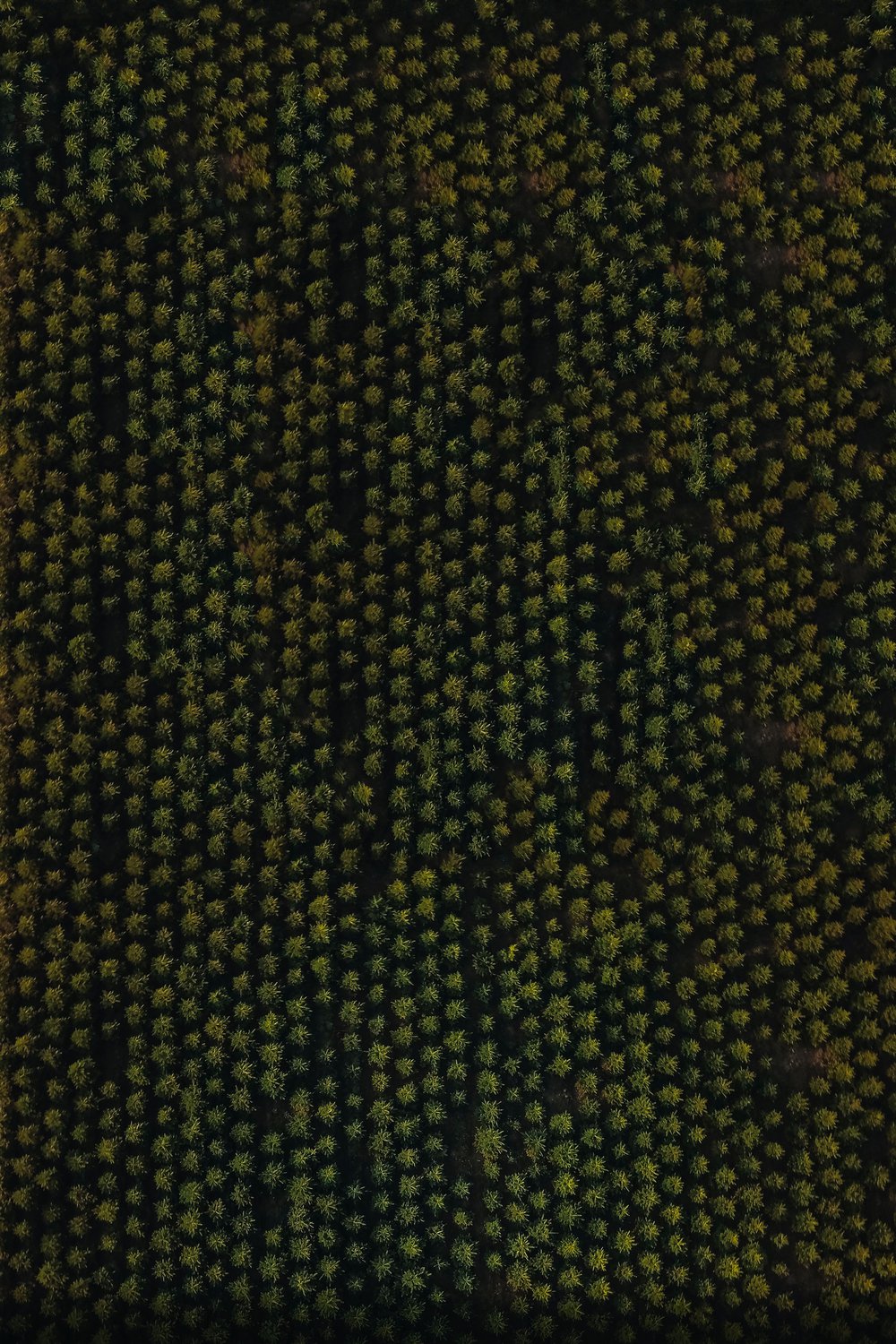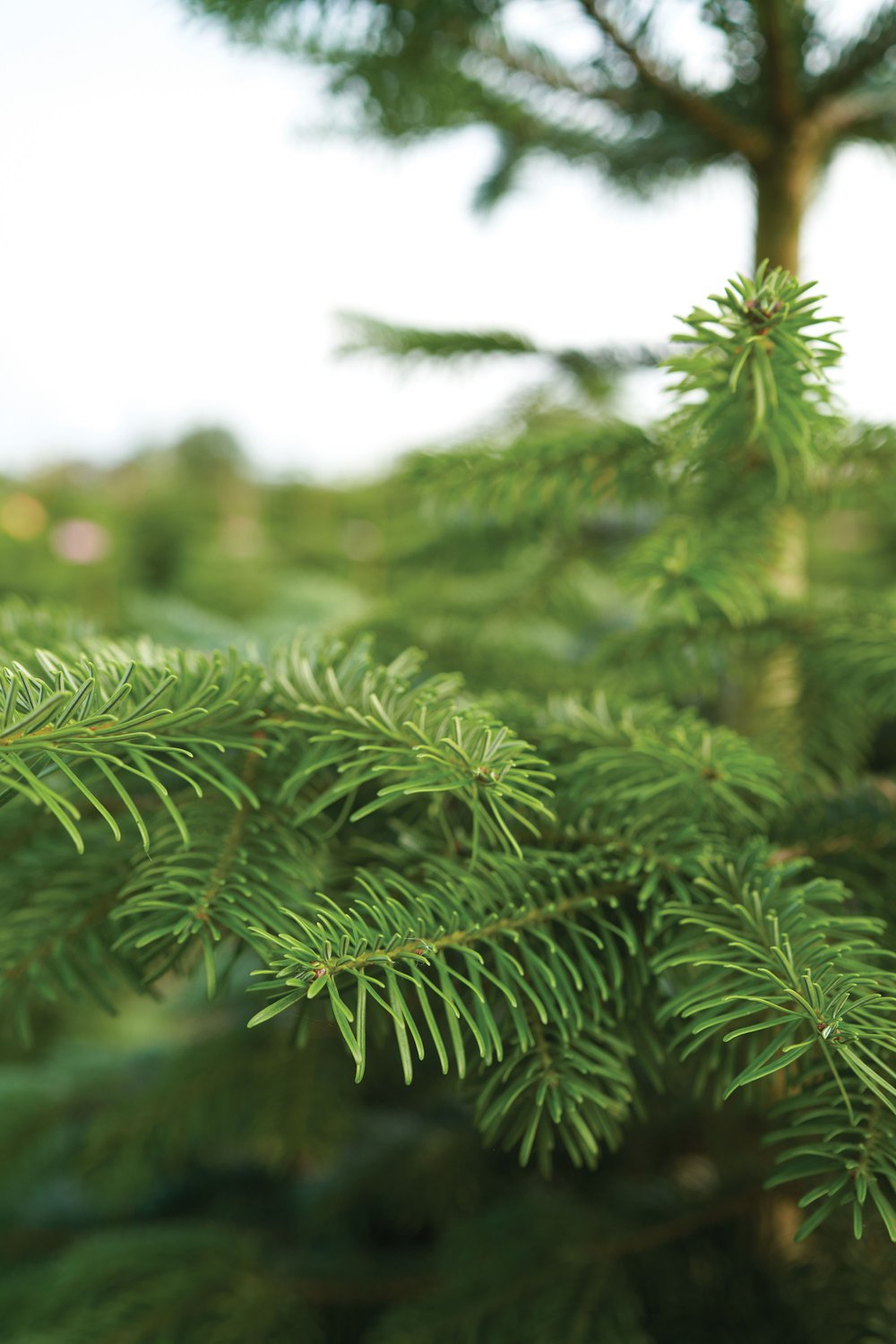The perfect Christmas tree is a Nordmann fir, greenhoused from a seed in the Caucasus Mountains of Georgia, then transplanted to the Danish coast.
“It has to be a good green colour, symmetrical and aesthetically pleasing with a nice top,” says Spinney’s dedicated farmer Trine Grice, who has given much of her life to growing such trees at her family farm, Bjergeskovgård.”
Trine’s grandfather bought the place from a fisherman in 1900 and first used it as a fruit plantation. Raised amid the orchards and pine forests, riding horses on the hills and beaches, helping work the land for pocket money, she was only 23 when entrusted by her parents – a native Dane and an Englishman – with the future of the property in 1977. Almost half a century later, those 30 hectares remain unbounded by fences.
“Freedom means a lot to me,” she says, “and that’s how much I believe in open spaces.” She stopped cultivating fruit here a couple of decades ago to focus almost completely on the Nordmann firs, now planting up to 30,000 Christmas trees per year. Bjergeskovgård is perfect for them, she explained, because it’s barely 500 metres from the sea.
“This means the soil is sandy, which allows the trees to grow slowly. And because temperatures are warmer where we are, we’re almost free of any frost and the damage it could cause – touch wood.”
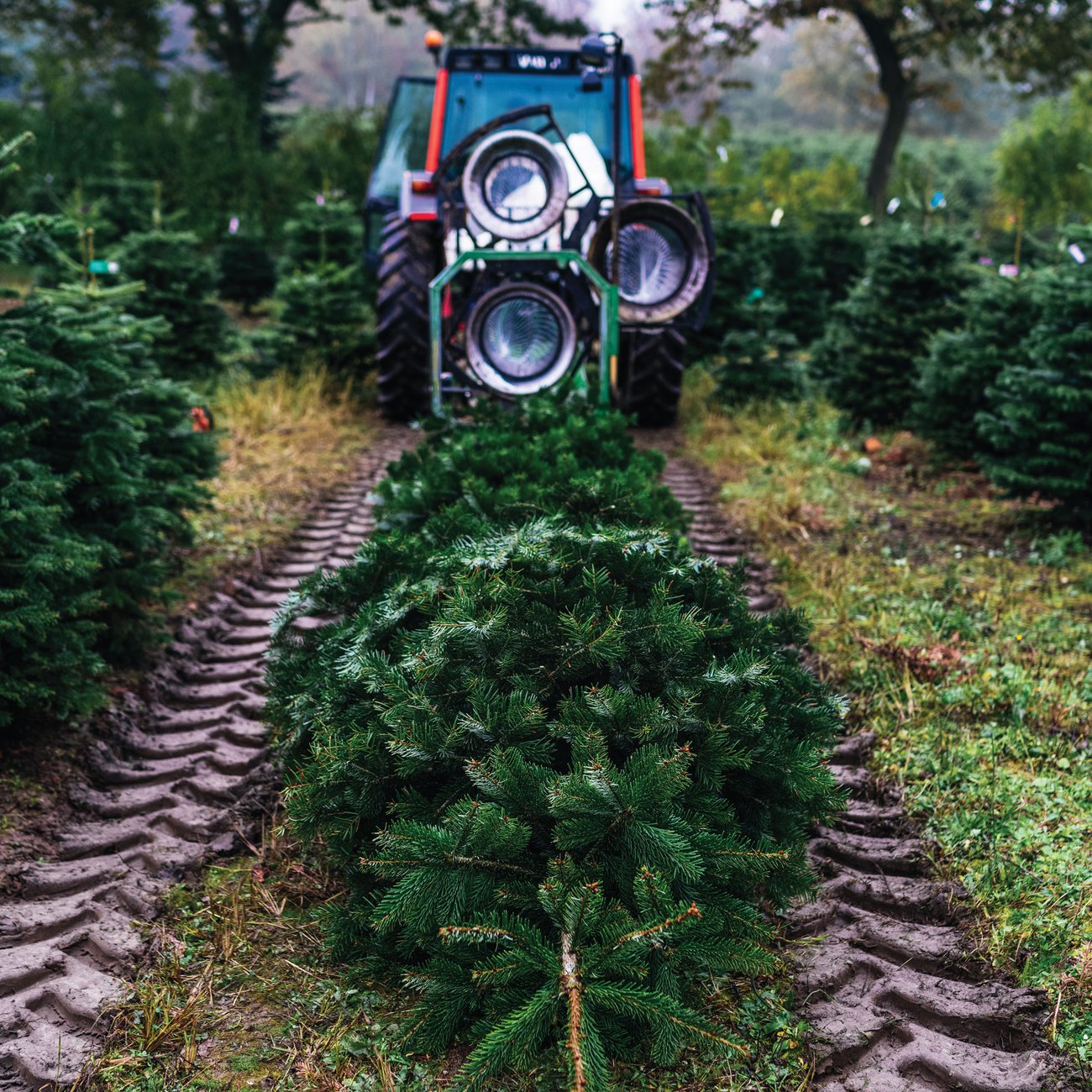
The trees are wrapped in nets before being shipped to Dubai.
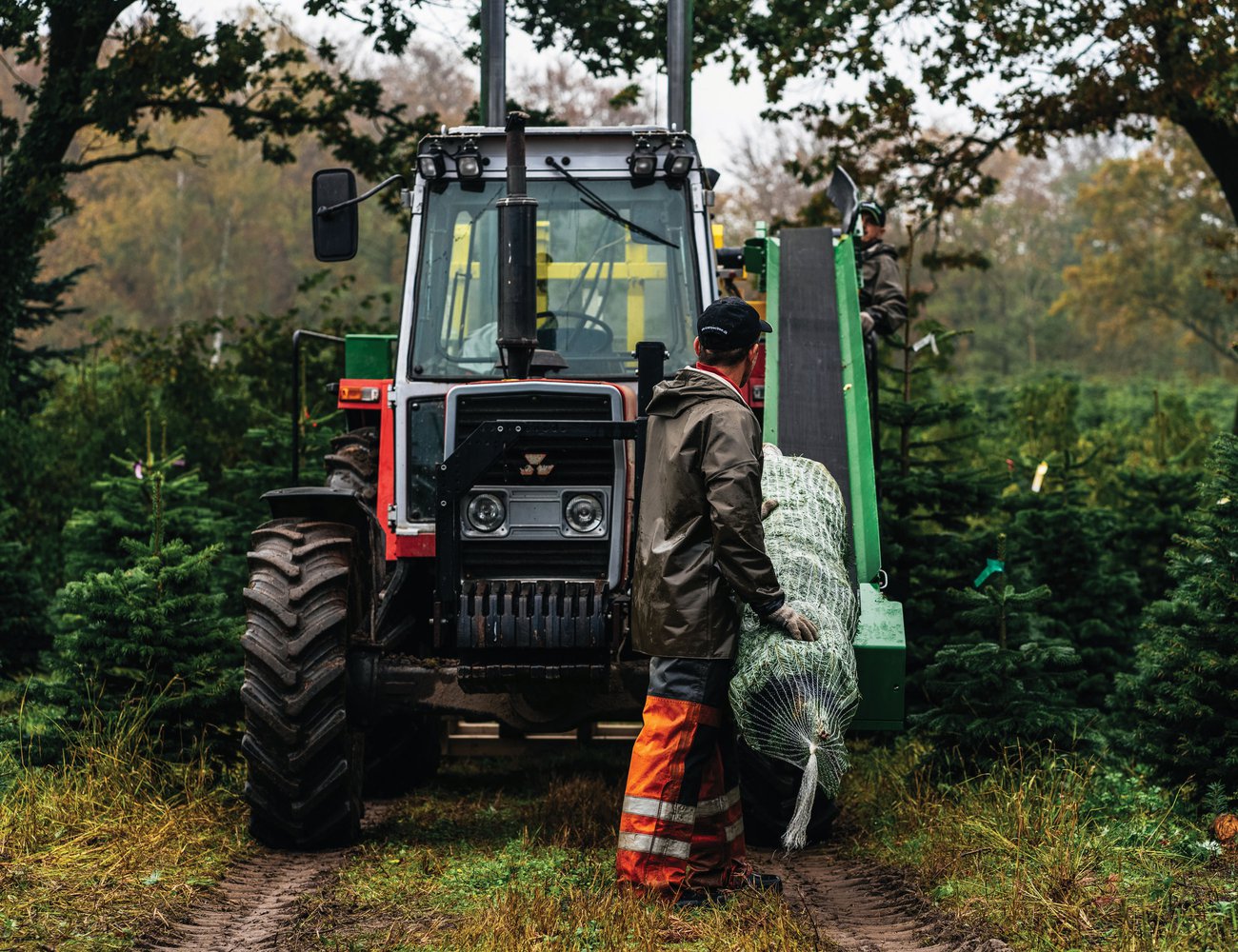
The trees for Spinneys are cut in October.
Each specimen is grown over seven years – up to 10 if they’re bigger – under EU guidelines for sustainable plant production, which effectively means organic fertiliser and zero recourse to chemical agents. Trine oversees the whole process, walking the farm in her hat and apron, surveying the treetops from her favourite spot on the highest hill.
“From there I can see all my land, our buildings, and the sea in the distance, which is just beautiful. It’s also great to be able to see the results of what I am doing. ”
As peaceful as this sounds, a lifetime in the business has also been, in some ways, an attritional fight against the perennial, eternal threats to her product. One is birds that nest in the trees and bend the branches so they weaken and sag. Another is hares that eat the saplings. And then there’s the grass, which “Christmas trees really don’t like,” says Trine, because it draws energy away from the roots. “We can’t let it grow too high around the base of the trees as it spoils the lower branches.”
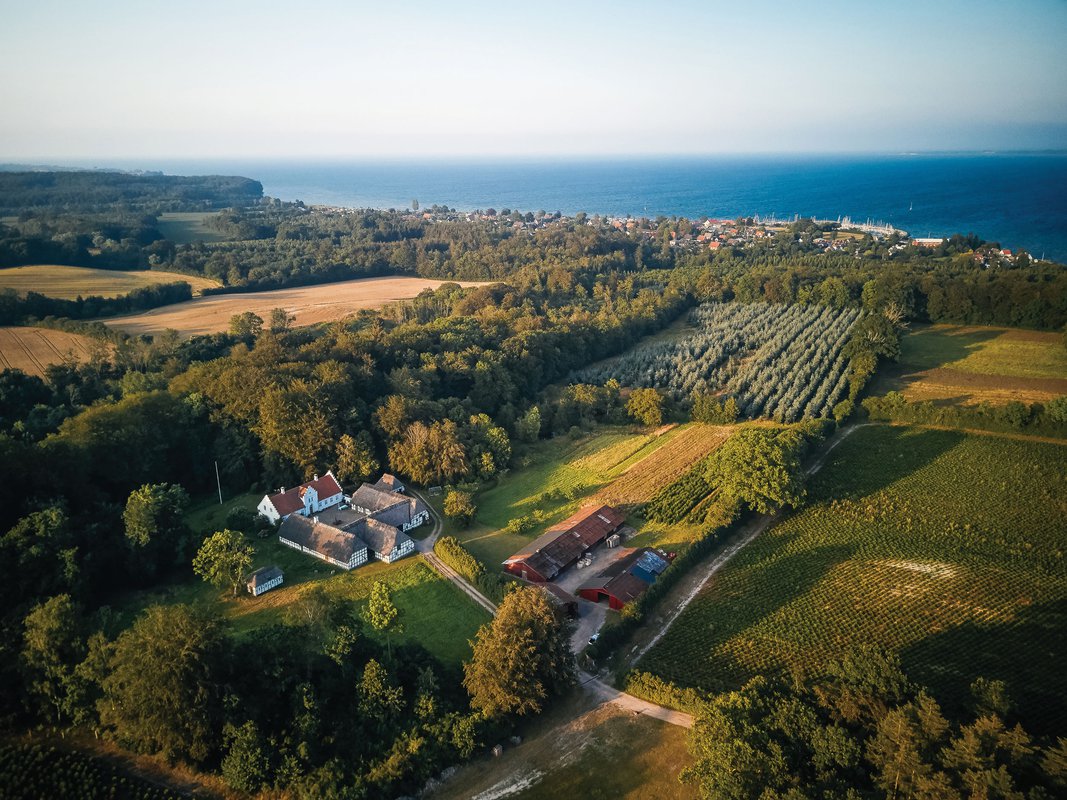
By we, she means herself and stalwart assistants Emil and Edith, a Polish couple who have long helped with planting, maintenance, “the constant shaping of the trees”, and the cutting that begins every October. Each tree is laid flat for a couple of days, so as not to die of “shock”, then wrapped and packed in batches for shipping, with Trine personally marking each tree suitable for export. That mark itself is an assurance of quality on every fir shipped to Spinneys via the port of Jebel Ali.
The Gulf, of course, is a world away from the wild shores of Denmark and Trine still has trouble getting over her amazement that there’s a market for her Christmas trees in Dubai. The climate of the Emirates is, in theory, another pretty severe shock to flora that has only known the relative cold. But the Nordmann firs that she supples “keep their needles for a long time,” says Trine. Kept in cool enough conditions – which is to say, air-con on a suitably low setting – they should stay intact “for anything from three to four months”. If it’s too warm, she warns, you can expect a fir to start shedding needles in less than a month.
And when you sit with your family around that tree, opening presents or eating seasonal snacks, you’ll be breathing in the same pine scent that comes to Trine on the Scandinavian breeze, as she stands on the highest hill of Bjergeskovgård.
